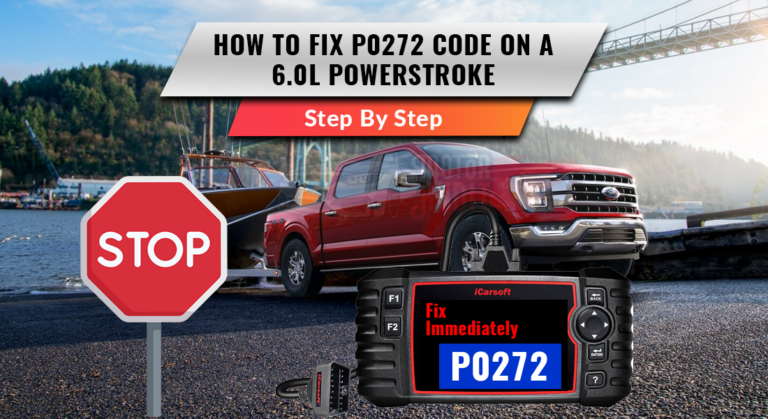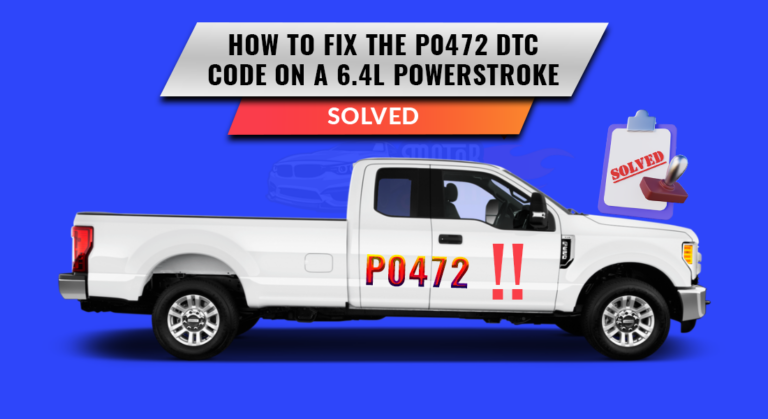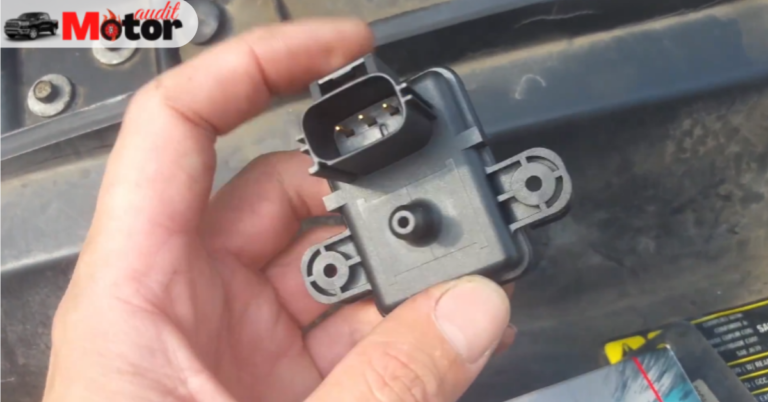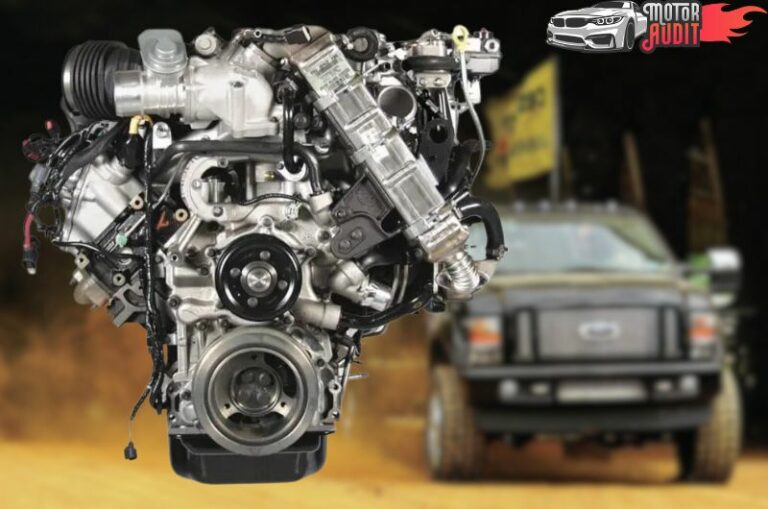Symptoms of A Bad Turbo On 6.4 Powerstroke (Explained)
While you were driving, you saw sudden smoke coming out of the exhaust pipe or maybe you heard a loud screeching that freaked you out, or probably you were facing slower and louder acceleration or all of them!
Perhaps this was caused by a faulty turbo of your 6.4 powerstroke engine.
When you know the symptoms of a bad turbo, you can fix or change it accordingly.
Signs Of A Bad Turbo On 6.4 Powerstroke
There are some significant signs that let you know if the turbo is in bad condition or something is wrong with it.
For example, there will be an engine fault light on the dashboard from where you will know something is not right.
In most cases with turbo problems, there will be lots of exhaust smoke than usual.
What Are The Symptoms Of A Bad Turbo On 6.4 Powerstroke?
There are some specific symptoms that can tell you about the bad turbo of your engine. With those symptoms, you can detect Powerstroke bad turbo.
Let’s dive into the main symptoms and how to detect 6.4 Powerstroke bad turbo symptoms.
1. Power loss:
This is one of the many symptoms of a bad turbo. You might feel an unusual power loss that has never happened before.
In some cases, you won’t be able to reach the top speed or fail to keep it while driving.
2. Slow acceleration:
Along with power loss, you may also find it hard to accelerate faster. The slow acceleration rate can be caused by a bad turbo in your system.
3. A loud noise like a siren
Additionally, you may hear loud siren noise from your turbo pipes similar to bad wheel bearings.
Normally, turbo-charged cars or trucks make pleasant noise that we want from a vehicle.
But if you hear something not soothing to your ears then it may be caused by a loose pipe or blade malfunctioning in your turbo.
4. Excessive smoke emission:
Generally, the exhaust pipe emits smoke from the engine. Turbo helps reduce excessive smoke.
However, when you have a faulty turbo, the possibilities are there will be a massive amount of smoke coming out of the exhaust pipe.
This indicates that there might be a leak in turbo and oil leaking into the exhaust system to make lots of smoke.
5. Blue/Gray Exhaust Smoke:
In addition to excessive smoke emission, there may be blue or grey exhaust smoke.
If this kind of smoke is seen while hard acceleration then it is probably due to the bad turbo and the Powerstroke engine is burning oil.
However, during a cold start, if the color of the smoke is blue or gray then it may not be the turbo, rather it can occur because of a leaking valve.
6. Increased Gas consumption:
Turbo helps in reducing fuel usage or efficient fuel usage. Thus, when your truck or car needs more fuel consumption it can tell you about a damaged turbo.
7. Oil coating:
In some cases, there might be oil coating inside the connector of the turbo and the intercooler. This happens because of oil leaking and unable to regulate the oil to the designated place.
What to Do When You Detect A Bad Turbo On 6.4 Powerstroke?
If you are facing one or more symptoms mentioned above then the next step is to know what you should do after detecting a bad turbo.
However, before we jump to what to do next after finding the bad turbo let’s check why we get a blown turbo.
The first reason behind a bad turbo is factory defects. On many occasions, some turbo comes in bad condition out of the factory. 6.7 Powerstrokes had lots of reports regarding faulty turbos.
The second reason is poor oil quality and low oil supply. If you put low-quality oil in the engine, it not only causes turbo issues but also other problems.
Thirdly, an oil leak can cause the turbo to go damaged.
A fourth reason is that if a foreign body enters inside the compressor sometimes it may cause friction and damage the turbo.
Now let’s get back to what you have to do after detecting a bad turbo.
You need to check the compressor and the turbo housing contact for oil, impact damage, or lots of movements to check what is causing the problem.
Remove the air filter and check the turbo for any external damage or cracks.
The next thing that you need to do is check the compressor for any visible problems. Look for dings, chips, or signs of corrosive pitting.
If nothing is found then check if the housing and the compressor are positioned right and the turbocharger is freely moving.
After that remove the exhaust pipe along with the turbo and check inside the turbine wheel if it is clean and healthy and check for the turbo blades if that can rotate freely.
You should probably have found the problem already with your turbo. Now, you can repair the bad turbo. Or, you can buy a better one with a good warranty.
Is Replacing A 6.4 Powerstroke Turbo Typically Expensive?
Unless the outside housings are broken, a turbocharger may usually be fixed.
Your turbocharger will be as good as new once the turbo specialist replaces the worn parts.
However, the cost of replacing a turbocharger assembly ranges from $3,608 to $4,117 on average.
Labor expenses are expected to range from $1159 to $1463, with parts costing between $2449 and $2654.
How Often Should You Inspect Or Service A 6.4 Powerstroke Turbo?
The truth is, the turbo that comes with the engine should be a fine lifetime! Most of the companies or manufacturers give a lifetime warranty along with a turbo.
You can use the same turbo as long as you use the same engine.
For inspecting you can check the condition of your engine once a week by yourself if possible and make sure everything is fine.
Check the lines, the oil, and other parts and connections to maintain a good condition.
Moreover, for servicing, you can just follow the scheduled servicing time for the whole engine and truck. Because there is no need to take the truck or car for inspecting or servicing only for the turbo.
The Verdict
The power stroke turbo like other parts of the engine needs good maintenance. Although turbo is a long-lasting part of the engine, it can go bad sometimes.
You need to monitor your car or truck’s engine regularly and take it to servicing timely for a healthy engine and engine parts. This will be enough for the turbo to be good and working.
However, if you encounter anything like the mentioned symptoms, do some diagnosis and take it to the mechanics.
- Read Also>>What Is P0046 Code On 6.0 Powerstroke & How To Fix?
- Read Also>>6.7L Powerstroke High Pressure Fuel Pump Failure Symptoms
- Read Also>>What Are The Symptoms Of A 6.7 Powerstroke Turbo Failure?
- Read Also>>Symptoms To Detect Bad Glow Plug Relay On 7.3L Powerstroke
- Read Also>>Symptoms Of 6.0 Powerstroke Injector Failure (Explained)





